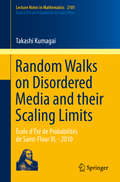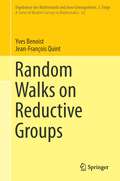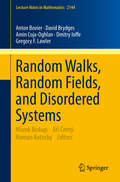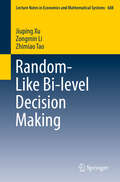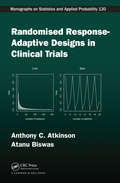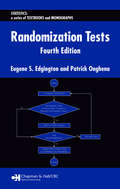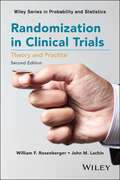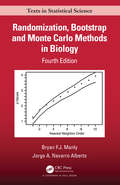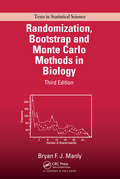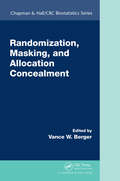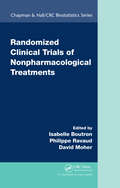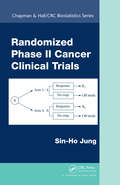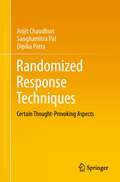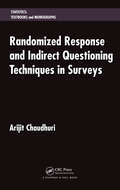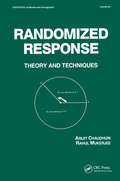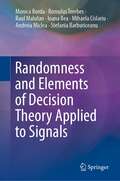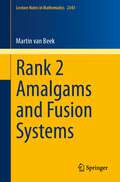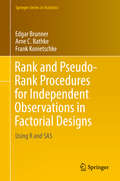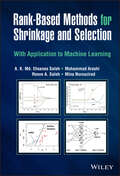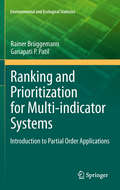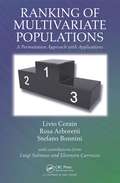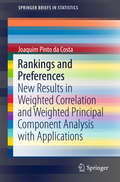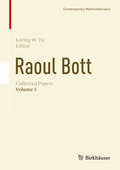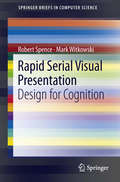- Table View
- List View
Random Walks on Disordered Media and their Scaling Limits
by Takashi KumagaiIn these lecture notes, we will analyze the behavior of random walk on disordered media by means of both probabilistic and analytic methods, and will study the scaling limits. We will focus on the discrete potential theory and how the theory is effectively used in the analysis of disordered media. The first few chapters of the notes can be used as an introduction to discrete potential theory. Recently, there has been significant progress on the theory of random walk on disordered media such as fractals and random media. Random walk on a percolation cluster('the ant in the labyrinth')is one of the typical examples. In 1986, H. Kesten showed the anomalous behavior of a random walk on a percolation cluster at critical probability. Partly motivated by this work, analysis and diffusion processes on fractals have been developed since the late eighties. As a result, various new methods have been produced to estimate heat kernels on disordered media. These developments are summarized in the notes.
Random Walks on Reductive Groups
by Yves Benoist Jean-François QuintThe classical theory of Random Walks describes the asymptotic behavior of sums of independent identically distributed random real variables. This book explains the generalization of this theory to products of independent identically distributed random matrices with real coefficients. Under the assumption that the action of the matrices is semisimple - or, equivalently, that the Zariski closure of the group generated by these matrices is reductive - and under suitable moment assumptions, it is shown that the norm of the products of such random matrices satisfies a number of classical probabilistic laws. This book includes necessary background on the theory of reductive algebraic groups, probability theory and operator theory, thereby providing a modern introduction to the topic.
Random Walks, Random Fields, and Disordered Systems
by Anton Bovier David Brydges Amin Coja-Oghlan Dmitry Ioffe Gregory F. LawlerMarek Biskup Jiří Černý Roman KoteckýFocusing on the mathematics that lies at the intersection of probability theory, statistical physics, combinatorics and computer science, this volume collects together lecture notes on recent developments in the area. The common ground of these subjects is perhaps best described by the three terms in the title: Random Walks, Random Fields and Disordered Systems. The specific topics covered include a study of Branching Brownian Motion from the perspective of disordered (spin-glass) systems, a detailed analysis of weakly self-avoiding random walks in four spatial dimensions via methods of field theory and the renormalization group, a study of phase transitions in disordered discrete structures using a rigorous version of the cavity method, a survey of recent work on interacting polymers in the ballisticity regime and, finally, a treatise on two-dimensional loop-soup models and their connection to conformally invariant systems and the Gaussian Free Field. The notes are aimed at early graduate students with a modest background in probability and mathematical physics, although they could also be enjoyed by seasoned researchers interested in learning about recent advances in the above fields.
Random-Like Bi-level Decision Making
by Jiuping Xu Zongmin Li Zhimiao TaoAmong the various multi-level formulations of mathematical models in decision making processes, this book focuses on the bi-level model. Being the most frequently used, the bi-level model addresses conflicts which exist in multi-level decision making processes. From the perspective of bi-level structure and uncertainty, this book takes real-life problems as the background, focuses on the so-called random-like uncertainty, and develops the general framework of random-like bi-level decision making problems. The random-like uncertainty considered in this book includes random phenomenon, random-overlapped random (Ra-Ra) phenomenon and fuzzy-overlapped random (Ra-Fu) phenomenon. Basic theory, models, algorithms and practical applications for different types of random-like bi-level decision making problems are also presented in this book.
Randomised Response-Adaptive Designs in Clinical Trials
by Anthony C Atkinson Atanu BiswasRandomised Response-Adaptive Designs in Clinical Trials presents methods for the randomised allocation of treatments to patients in sequential clinical trials. Emphasizing the practical application of clinical trial designs, the book is designed for medical and applied statisticians, clinicians, and statisticians in training. After introducing clin
Randomization Tests (Statistics: A Series of Textbooks and Monographs)
by Patrick Onghena Eugene EdgingtonThe number of innovative applications of randomization tests in various fields and recent developments in experimental design, significance testing, computing facilities, and randomization test algorithms have necessitated a new edition of Randomization Tests.Updated, reorganized, and revised, the text emphasizes the irrelevance and implausibility of the random sampling assumption for the typical experiment in three completely rewritten chapters. It also discusses factorial designs and interactions and combines repeated-measures and randomized block designs in one chapter. The authors focus more attention on the practicality of N-of-1 randomization tests and the availability of user-friendly software to perform them. In addition, they provide an overview of free and commercial computer programs for all of the tests presented in the book. Building on the previous editions that have served as standard textbooks for more than twenty-five years, Randomization Tests, Fourth Edition includes downloadable resources of up-to-date randomization test programs that facilitate application of the tests to experimental data. This CD-ROM enables students to work out problems that have been added to the chapters and helps professors teach the basics of randomization tests and devise tasks for assignments and examinations.
Randomization in Clinical Trials
by John M. Lachin William F. RosenbergerPraise for the First Edition "All medical statisticians involved in clinical trials should read this book..." - Controlled Clinical Trials Featuring a unique combination of the applied aspects of randomization in clinical trials with a nonparametric approach to inference, Randomization in Clinical Trials: Theory and Practice, Second Edition is the go-to guide for biostatisticians and pharmaceutical industry statisticians. Randomization in Clinical Trials: Theory and Practice, Second Edition features: Discussions on current philosophies, controversies, and new developments in the increasingly important role of randomization techniques in clinical trials A new chapter on covariate-adaptive randomization, including minimization techniques and inference New developments in restricted randomization and an increased focus on computation of randomization tests as opposed to the asymptotic theory of randomization tests Plenty of problem sets, theoretical exercises, and short computer simulations using SAS® to facilitate classroom teaching, simplify the mathematics, and ease readers' understanding Randomization in Clinical Trials: Theory and Practice, Second Edition is an excellent reference for researchers as well as applied statisticians and biostatisticians. The Second Edition is also an ideal textbook for upper-undergraduate and graduate-level courses in biostatistics and applied statistics. William F. Rosenberger, PhD, is University Professor and Chairman of the Department of Statistics at George Mason University. He is a Fellow of the American Statistical Association and the Institute of Mathematical Statistics, and author of over 80 refereed journal articles, as well as The Theory of Response-Adaptive Randomization in Clinical Trials, also published by Wiley. John M. Lachin, ScD, is Research Professor in the Department of Epidemiology and Biostatistics as well as in the Department of Statistics at The George Washington University. A Fellow of the American Statistical Association and the Society for Clinical Trials, Dr. Lachin is actively involved in coordinating center activities for clinical trials of diabetes. He is the author of Biostatistical Methods: The Assessment of Relative Risks, Second Edition, also published by Wiley.
Randomization, Bootstrap and Monte Carlo Methods in Biology (Chapman & Hall/CRC Texts in Statistical Science)
by Bryan F.J. Manly Jorge A. Navarro AlbertoModern computer-intensive statistical methods play a key role in solving many problems across a wide range of scientific disciplines. Like its bestselling predecessors, the fourth edition of Randomization, Bootstrap and Monte Carlo Methods in Biology illustrates a large number of statistical methods with an emphasis on biological applications. The focus is now on the use of randomization, bootstrapping, and Monte Carlo methods in constructing confidence intervals and doing tests of significance. The text provides comprehensive coverage of computer-intensive applications, with data sets available online. Features Presents an overview of computer-intensive statistical methods and applications in biology Covers a wide range of methods including bootstrap, Monte Carlo, ANOVA, regression, and Bayesian methods Makes it easy for biologists, researchers, and students to understand the methods used Provides information about computer programs and packages to implement calculations, particularly using R code Includes a large number of real examples from a range of biological disciplines Written in an accessible style, with minimal coverage of theoretical details, this book provides an excellent introduction to computer-intensive statistical methods for biological researchers. It can be used as a course text for graduate students, as well as a reference for researchers from a range of disciplines. The detailed, worked examples of real applications will enable practitioners to apply the methods to their own biological data.
Randomization, Bootstrap and Monte Carlo Methods in Biology (Chapman & Hall/CRC Texts in Statistical Science)
by Bryan F.J. ManlyModern computer-intensive statistical methods play a key role in solving many problems across a wide range of scientific disciplines. This new edition of the bestselling Randomization, Bootstrap and Monte Carlo Methods in Biology illustrates the value of a number of these methods with an emphasis on biological applications. This textbook focuses on three related areas in computational statistics: randomization, bootstrapping, and Monte Carlo methods of inference. The author emphasizes the sampling approach within randomization testing and confidence intervals. Similar to randomization, the book shows how bootstrapping, or resampling, can be used for confidence intervals and tests of significance. It also explores how to use Monte Carlo methods to test hypotheses and construct confidence intervals.New to the Third EditionUpdated information on regression and time series analysis, multivariate methods, survival and growth data as well as software for computational statisticsReferences that reflect recent developments in methodology and computing techniquesAdditional references on new applications of computer-intensive methods in biologyProviding comprehensive coverage of computer-intensive applications while also offering data sets online, Randomization, Bootstrap and Monte Carlo Methods in Biology, Third Edition supplies a solid foundation for the ever-expanding field of statistics and quantitative analysis in biology.
Randomization, Masking, and Allocation Concealment (Chapman & Hall/CRC Biostatistics Series)
by Vance BergerRandomization, Masking, and Allocation Concealment is indispensable for any trial researcher who wants to use state of the art randomization methods, and also wants to be able to describe these methods correctly. <P><P>Far too often the subtle nuances that distinguish proper randomization from flawed randomization are completely ignored in trial reports that state only that randomization was used, with no additional information. Experience has shown that in many cases, the type of randomization that was used was flawed. It is only a matter of time before medical journals and regulatory agencies come to realize that we can no longer rely on (or publish) flawed trials, and that flawed randomization in and of itself disqualifies a trial from being robust or high quality, even if that trial is of high quality otherwise. <P><P>This book will help to clarify the role randomization plays in ensuring internal validity, and in drawing valid inferences from the data. The various chapters cover a variety of randomization methods, and are not limited to the most common (and most flawed) ones. Readers will come away with a profound understanding of what constitutes a valid randomization procedure, so that they can distinguish the valid from the flawed among not only existing methods but also methods yet to be developed.
Randomized Algorithms
by Prabhakar Raghavan Rajeev MotwaniFor many applications, a randomized algorithm is either the simplest or the fastest algorithm available, and sometimes both. This book introduces the basic concepts in the design and analysis of randomized algorithms. The first part of the text presents basic tools such as probability theory and probabilistic analysis that are frequently used in algorithmic applications. Algorithmic examples are also given to illustrate the use of each tool in a concrete setting. In the second part of the book, each chapter focuses on an important area to which randomized algorithms can be applied, providing a comprehensive and representative selection of the algorithms that might be used in each of these areas. Although written primarily as a text for advanced undergraduates and graduate students, this book should also prove invaluable as a reference for professionals and researchers.
Randomized Clinical Trials of Nonpharmacological Treatments (Chapman & Hall/CRC Biostatistics Series)
by David Moher Isabelle Boutron Philippe RavaudNonpharmacological treatments include a wide variety of treatments such as surgery, technical procedures, implantable and non-implantable devices, rehabilitation, psychotherapy, and behavioral interventions. Unlike pharmacological treatments, these have no specific requirements for approval. Consequently, they can be widely proposed in clinical pra
Randomized Phase II Cancer Clinical Trials (Chapman & Hall/CRC Biostatistics Series)
by Sin-Ho JungIn cancer research, a traditional phase II trial is designed as a single-arm trial that compares the experimental therapy to a historical control. This simple trial design has led to several adverse issues, including increased false positivity of phase II trial results and negative phase III trials. To rectify these problems, oncologists and biosta
Randomized Response Techniques: Certain Thought-Provoking Aspects
by Arijit Chaudhuri Sanghamitra Pal Dipika PatraThis book presents an up-to-date perspective on randomized response techniques (RRT). It discusses the most appropriate and efficient procedures of RRT for analysing data from queries dealing with sensitive and confidential issues, including the treatment of infinite and finite population setups. The book aims to spark a renewed interest among sampling experts who may have overlooked RRT. By addressing the missing topics and incorporating a wide range of contributors' works, it seeks to foster an appreciative academic environment and inspire a reformed and amended view of RRT. As the book unfolds, readers will gain valuable insights into the evolving landscape of RRT and its applications, positioning them at the forefront of this engaging field of study.On RRT, the literature has grown immensely since its inception in 1965 by S.L. Warner. Despite several books published on the subject, there are still two crucial topics missing from the existing RRT literature. This book aimsto address these gaps and provide valuable insights to curious readers in the field. The book is mandatory reading for statisticians and biostatisticians, market researchers, operations researchers, pollsters, sociologists, political scientists, economists and advanced undergraduate and graduate students in these areas.
Randomized Response and Indirect Questioning Techniques in Surveys (Statistics: A Series of Textbooks and Monographs)
by Arijit ChaudhuriFor surveys involving sensitive questions, randomized response techniques (RRTs) and other indirect questions are helpful in obtaining survey responses while maintaining the privacy of the respondents. Written by one of the leading experts in the world on RR, Randomized Response and Indirect Questioning Techniques in Surveys describes the current s
Randomized Response: Theory and Techniques (Statistics: A Series Of Textbooks And Monographs #Volume 34)
by Arijit Chaudhuri Rahul MukerjeeOffering a concise account of the most appropriate and efficient procedures for analyzing data from queries dealing with sensitive and confidential issues- including the first book-length treatment of infinite and finite population set-ups - this volume begins with the simplest problems, complete with their properties and solutions, and proceeds to incrementally more difficult topics. Randomized Response is mandatory reading for statisticians and biostatisticians, market researchers, operations researchers, pollsters, sociologists, political scientists, economists and advanced undergraduate and graduate students in these areas.
Randomness and Elements of Decision Theory Applied to Signals
by Monica Borda Romulus Terebes Raul Malutan Ioana Ilea Mihaela Cislariu Andreia Miclea Stefania BarburiceanuThis book offers an overview on the main modern important topics in random variables, random processes, and decision theory for solving real-world problems. After an introduction to concepts of statistics and signals, the book introduces many essential applications to signal processing like denoising, texture classification, histogram equalization, deep learning, or feature extraction. The book uses MATLAB algorithms to demonstrate the implementation of the theory to real systems. This makes the contents of the book relevant to students and professionals who need a quick introduction but practical introduction how to deal with random signals and processes
Rank 2 Amalgams and Fusion Systems (Lecture Notes in Mathematics #2343)
by Martin van BeekThis monograph provides a comprehensive treatment of the classification of small fusion systems, that is, fusion systems with few essential subgroups. It demonstrates a broad range of techniques from local group theory and fusion systems, several of which can be applied in more general settings. Addressing research problems that have not been treated in the past, it is the first text to explicitly use the amalgam method in this context. Fusion systems offer an enticing way to unify various p-local methods employed in group theory, representation theory and homotopy theory; but as abstract constructions they are still somewhat mysterious. This book paves the way to a broad and systematic study of these categories by applying the amalgam method, thus modernizing a methodology widely used to understand the local structure of finite groups. With this comes an introduction to several vital techniques in local group theory, a generous survey of the structure and modular representation theory of some important families of finite groups, and a demonstration of the value of combinatorial methods in finite group theory and fusion systems. Primarily aimed at researchers active in fusion systems and group amalgams, the book will also be of interest to anyone working with finite groups and their modular representations, group actions on trees, or classifying spaces. The inclusion of preliminary chapters outlining the theoretical prerequisites make it ideal for a short lecture course or as a reading group text for early career researchers and graduate students.
Rank and Pseudo-Rank Procedures for Independent Observations in Factorial Designs: Using R and SAS (Springer Series in Statistics)
by Edgar Brunner Arne C. Bathke Frank KonietschkeThis book explains how to analyze independent data from factorial designs without having to make restrictive assumptions, such as normality of the data, or equal variances. The general approach also allows for ordinal and even dichotomous data. The underlying effect size is the nonparametric relative effect, which has a simple and intuitive probability interpretation. The data analysis is presented as comprehensively as possible, including appropriate descriptive statistics which follow a nonparametric paradigm, as well as corresponding inferential methods using hypothesis tests and confidence intervals based on pseudo-ranks. Offering clear explanations, an overview of the modern rank- and pseudo-rank-based inference methodology and numerous illustrations with real data examples, as well as the necessary R/SAS code to run the statistical analyses, this book is a valuable resource for statisticians and practitioners alike.
Rank-Based Methods for Shrinkage and Selection: With Application to Machine Learning
by Mohammad Arashi A. K. Saleh Resve A. Saleh Mina NorouziradRank-Based Methods for Shrinkage and Selection A practical and hands-on guide to the theory and methodology of statistical estimation based on rank Robust statistics is an important field in contemporary mathematics and applied statistical methods. Rank-Based Methods for Shrinkage and Selection: With Application to Machine Learning describes techniques to produce higher quality data analysis in shrinkage and subset selection to obtain parsimonious models with outlier-free prediction. This book is intended for statisticians, economists, biostatisticians, data scientists and graduate students. Rank-Based Methods for Shrinkage and Selection elaborates on rank-based theory and application in machine learning to robustify the least squares methodology. It also includes: Development of rank theory and application of shrinkage and selection Methodology for robust data science using penalized rank estimators Theory and methods of penalized rank dispersion for ridge, LASSO and Enet Topics include Liu regression, high-dimension, and AR(p) Novel rank-based logistic regression and neural networks Problem sets include R code to demonstrate its use in machine learning
Ranking and Prioritization for Multi-indicator Systems
by Ganapati P. Patil Rainer BrüggemannThis book provides axioms of partial order and some basic material, for example consequences of "criss-crossing" of data profiles, the role of aggregations of the indicators and the powerful method of formal concept analysis. The interested reader will learn how to apply fuzzy methods in partial order analysis and what 'antagonistic indicator' means.
Ranking of Multivariate Populations: A Permutation Approach with Applications
by Stefano Bonnini Livio Corain Rosa ArborettiRanking of Multivariate Populations: A Permutation Approach with Applications presents a novel permutation-based nonparametric approach for ranking several multivariate populations. Using data collected from both experimental and observation studies, it covers some of the most useful designs widely applied in research and industry investigations, such as multivariate analysis of variance (MANOVA) and multivariate randomized complete block (MRCB) designs. <P><P>The first section of the book introduces the topic of ranking multivariate populations by presenting the main theoretical ideas and an in-depth literature review. The second section discusses a large number of real case studies from four specific research areas: new product development in industry, perceived quality of the indoor environment, customer satisfaction, and cytological and histological analysis by image processing. A web-based nonparametric combination global ranking software is also described. <P><P>Designed for practitioners and postgraduate students in statistics and the applied sciences, this application-oriented book offers a practical guide to the reliable global ranking of multivariate items, such as products, processes, and services, in terms of the performance of all investigated products/prototypes.
Rankings and Preferences
by Joaquim Pinto da CostaThis book examines in detail the correlation, more precisely the weighted correlation and applications involving rankings. A general application is the evaluation of methods to predict rankings. Others involve rankings representing human preferences to infer user preferences; the use of weighted correlation with microarray data and those in the domain of time series. In this book we present new weighted correlation coefficients and new methods of weighted principal component analysis. We also introduce new methods of dimension reduction and clustering for time series data and describe some theoretical results on the weighted correlation coefficients in separate sections.
Raoul Bott: Volume 5 (Contemporary Mathematicians Ser.)
by Loring W. TuThis book is the fifth and final volume of Raoul Bott’s Collected Papers. It collects all of Bott’s published articles since 1991 as well as some articles published earlier but missing in the earlier volumes. The volume also contains interviews with Raoul Bott, several of his previously unpublished speeches, commentaries by his collaborators such as Alberto Cattaneo and Jonathan Weitsman on their joint articles with Bott, Michael Atiyah’s obituary of Raoul Bott, Loring Tu’s authorized biography of Raoul Bott, and reminiscences of Raoul Bott by his friends, students, colleagues, and collaborators, among them Stephen Smale, David Mumford, Arthur Jaffe, Shing-Tung Yau, and Loring Tu. The mathematical articles, many inspired by physics, encompass stable vector bundles, knot and manifold invariants, equivariant cohomology, and loop spaces. The nonmathematical contributions give a sense of Bott’s approach to mathematics, style, personality, zest for life, and humanity. In one of the articles, from the vantage point of his later years, Raoul Bott gives a tour-de-force historical account of one of his greatest achievements, the Bott periodicity theorem. A large number of the articles originally appeared in hard-to-find conference proceedings or journals. This volume makes them all easily accessible. It also features a collection of photographs giving a panoramic view of Raoul Bott's life and his interaction with other mathematicians.
Rapid Serial Visual Presentation
by Robert Spence Mark WitkowskiA powerful new image presentation technique has evolved over the last twenty years, and its value demonstrated through its support of many and varied common tasks. Conceptually, Rapid Serial Visual Presentation (RSVP) is basically simple, exemplified in the physical world by the rapid riffling of the pages of a book in order to locate a known image. Advances in computation and graphics processing allow RSVP to be applied flexibly and effectively to a huge variety of common tasks such as window shopping, video fast-forward and rewind, TV channel selection and product browsing. At its heart is a remarkable feature of the human visual processing system known as pre-attentive processing, one which supports the recognition of a known image within as little as one hundred milliseconds and without conscious cognitive effort. Knowledge of pre-attentive processing, together with extensive empirical evidence concerning RSVP, has allowed the authors to provide useful guidance to interaction designers wishing to explore the relevance of RSVP to an application, guidance which is supported by a variety of illustrative examples.
